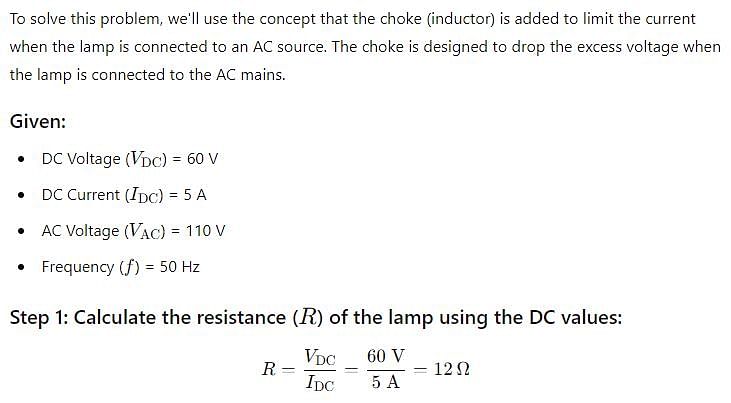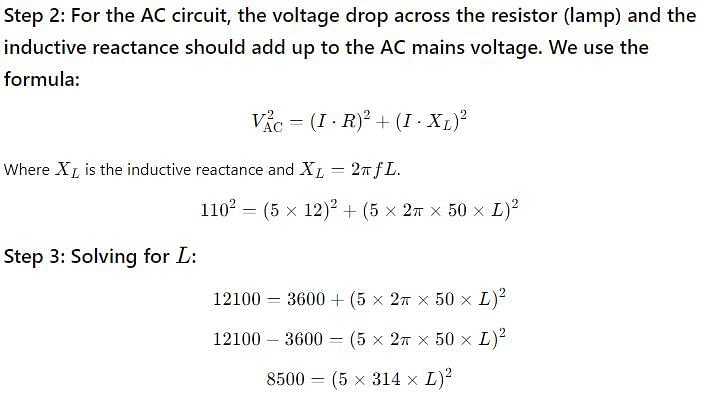Test: AC Applied to LCR in Series - JEE MCQ
10 Questions MCQ Test - Test: AC Applied to LCR in Series
In an RLC circuit, which of the following is always used as a vector reference?
| 1 Crore+ students have signed up on EduRev. Have you? Download the App |
A 1.0 mH inductance, a10μF capacitance and a 5.0 ohm resistance are connected series to an a.c. source. It is found that inductor and the capacitor show equal reactance. The reactance should be nearest to:
In which of the following cases the power factor is not equal to 1
What is the inductance of a choke required for a lamp running at 60 volt d.c consuming 5 A current connected to 110 volt, 50 Hz ac mains?
What is the value of power factor in RLC circuit
In a series LCR what will be phase difference between voltage drop across inductor and capacitor
A resistance of 5 ohm and an inductance of 50 mH are connected in series with an a. c. I = 100 sin (100 t). What is the phase difference between the instantaneous current and voltage?




















